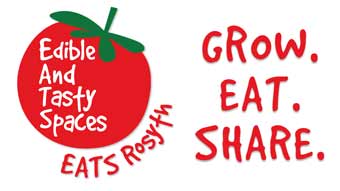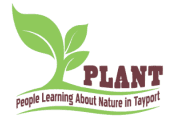The following frequently asked questions will help you decide what is best for your garden. Please also look at our Planting and Tree Care Guide to find out how to look after your tree. There is a glossary at the end to help if some of the gardening terms are new to you.
If you have a garden, please consider making space for a fruit tree. It will make a wonderful addition! If you do not own your garden, please seek permission from the owner of the land before planting a tree.
Frequently Asked Questions
Why should you plant a fruit tree?
You might wonder if planting a fruit tree is worth the effort and expense but your tree will repay you in many ways.
The benefits of fruit trees include:
- Free fruit: apples, pears, plums, cherries, you name it!
- Your fruit will be picked on your doorstep.
- Your own fruit will be tastier, fresher and contain more nutrients .
- If you don’t use chemicals your fruit will be organic.
- If you replace shop bought fruit with your own fruit you will reduce your carbon footprint.
- Your tree will store carbon throughout its life.
- A tree provides a home for wildlife.
- A tree provides shade and shelter.
- Trees can provide privacy.
- Fruit trees are beautiful! Blossom in the spring and fruit in the autumn.
How much does a fruit tree cost?
The cost of buying fruit trees varies but a young apple tree should cost from around £16 – £25 if bought ‘bareroot’. This means a tree that is bought in the winter when the tree is dormant and which is delivered without soil around the roots.
Plums and pears may cost more and those bought in a pot may be £50 – £60. Climate Action Fife aims to raise funds to buy trees for the project that will be free for householders.
How does planting a tree help combat the climate emergency?
Planting a tree is the best way to reduce your garden’s carbon footprint. Trees remove carbon dioxide from the atmosphere and store it in their trunks, twigs and leaves where it is locked away for decades. Planting trees is a recognised strategy to offset your carbon footprint.
The Woodland Trust says, “to help reach the UK government’s 2050 target to become carbon net zero – that’s removing as much carbon as we’re producing – we need more trees. The reality is we need to increase the UK’s woodland cover from its pitiful 13% to at least 19%.” Planting a fruit tree will help meet the target.
An apple tree will store around 25kg CO2 per year on average when fully grown.

Do I have enough space for a fruit tree?
Fruit trees are available to suit every size of garden. Most fruit trees, such as apples, pears, plums and cherries, are grown by nurseries using a technique called grafting. Grafting is a specialist technique that joins the top of a chosen variety of tree to the roots (rootstock) of another tree to select desired characteristics. Grafting can produce trees of different sizes but of the same variety.
The rootstock influences the eventual size of the trees. Trees on dwarfing rootstocks, such as M27 can be planted in pots or in small spaces in town gardens. If you have more space, choose a more vigorous rootstock such as M25 (see the Fruit Tree Height Guide below for sizes). If you have a sunny wall, you could have fun training a fruit tree up it.
Fruit trees can be trained to grow in a range of shapes such as cordons, fans or espaliers which all take up less space and can help fruit ripen and be easier to pick. In larger gardens where there is space for more than one tree, spacing must take account of the eventual size of the trees. Larger trees should be 5-7 metres apart.
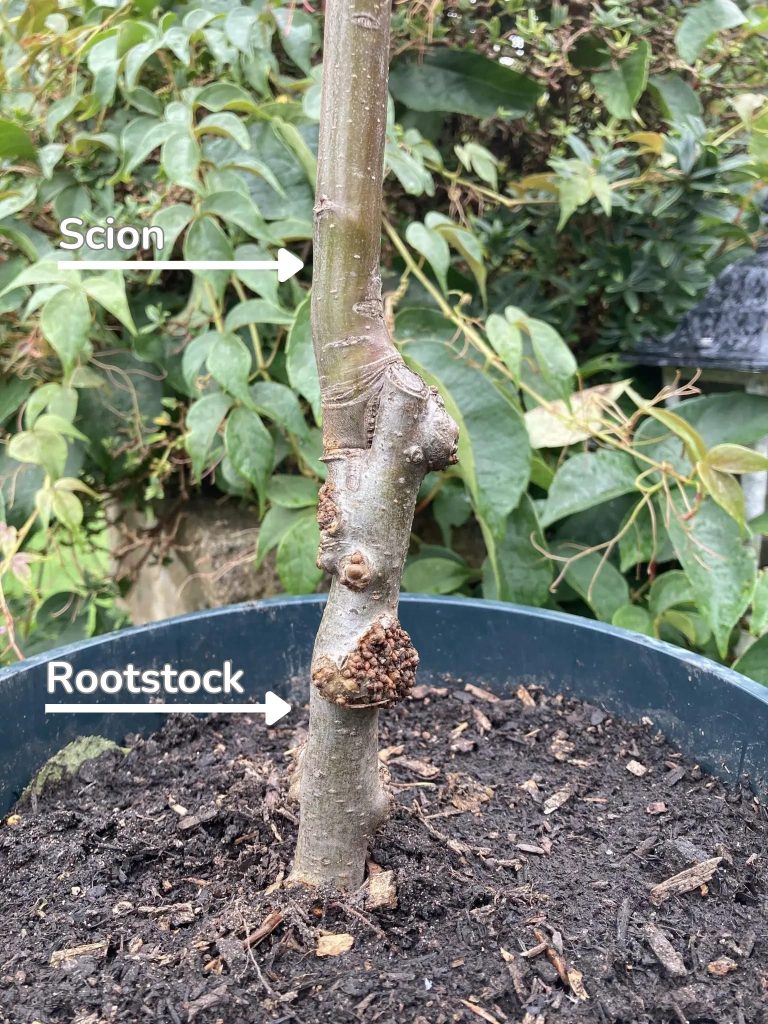
What is a rootstock?
Almost all fruit trees are grown by grafting (joining) a bud or shoot (scion) to the roots (rootstock) of another tree to create one new tree. The part of the tree that bears fruit is from a different tree to the part with the root system. This type of propagation allows growers to produce trees with the desired characteristics such as the size of the tree and disease resistance.
Is my garden the right place to grow a fruit tree?
Fruit trees prefer warm, sheltered sites with good exposure to the sun. A gently sloping site is ideal as it stops cold frosty air from settling around the trees. Lower altitudes below 120m are better than higher altitudes for fruit growing. In Fife, most sites will be at lower altitudes but more exposed sites can be improved by providing shelter or growing on south facing walls. Fruit trees will suffer in water-logged soils, so avoid boggy areas.
Deep, well-drained soils with neutral or slightly acid conditions provide the best growing conditions. Most soils in Fife will be well suited to growing fruit trees. If you want to, you can check the pH of your soil with a testing kit from a garden centre. If you find your soil is very alkaline or very acid, you could grow in a large container or pot instead.
If you have a small garden, patio or balcony, fruit trees can be grown in 25 litre pots. Trees grown in pots will have a shorter life but will produce fruit sooner and may live for 10 years. Growing in a pot may be a good option if you are renting or plan to move within a few years.
How tall will fruit trees grow?
The height of a mature fruit tree is largely controlled by the rootstock it is grown on. Rootstocks for small gardens are available but at the expense of fruit cropping and tree resilience. The rootstock determines the vigour and size of the mature tree. For example, for apples, a dwarfing M27 rootstock will produce trees suitable for pots and grow to less than 2m tall. A guide to the heights of fully grown trees is given in the Fruit Tree Height Guide below.
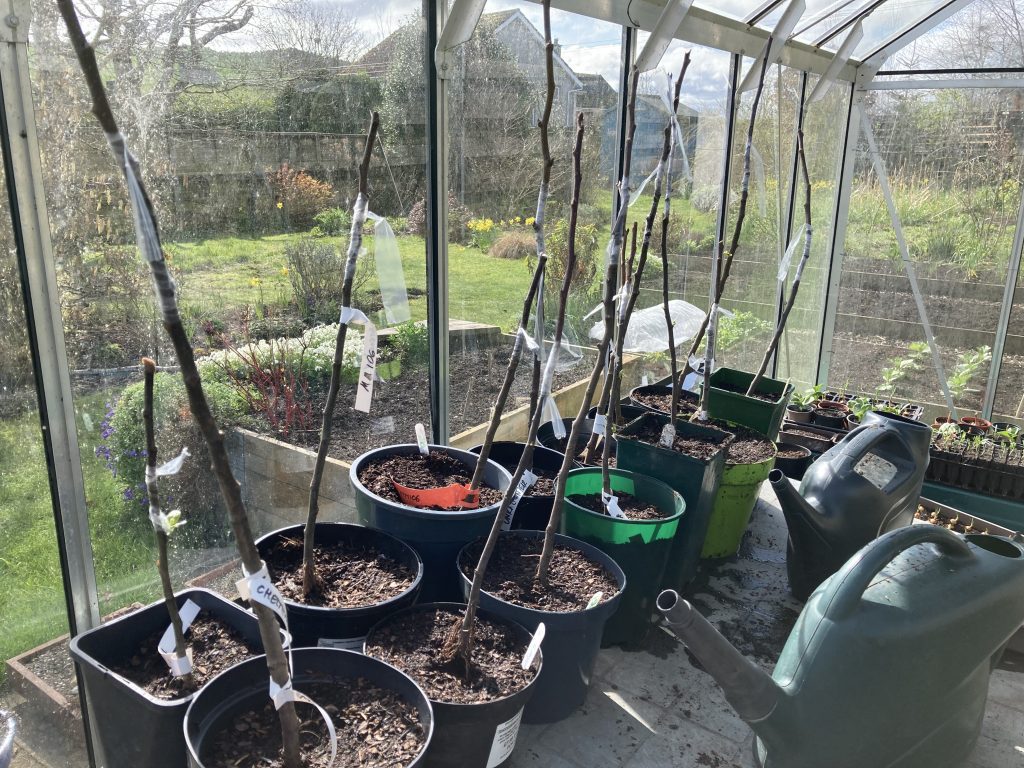
What kind of fruit tree should I plant?
The types of fruit tree that have done well in Fife in the past include apples, plums, damsons, pears and cherries.
Pears, for example, are becoming more viable in Fife with changes in our climate. Trees such as quince, peach, nectarine and apricot prefer warmer climates but can be grown in Fife in very warm, sheltered south facing gardens or under cover. They all benefit from being grown against a south facing wall which stores and reflects heat.
Other types of fruit tree that will have a lower success rate if grown outdoors in Fife include fig, olive, medlar, mulberry, almond, walnut, cobnut.

Which varieties of fruit are suitable for Fife?
All fruit trees are available in many different varieties or cultivars. A cultivar is a plant that has been bred by gardeners to provide certain characteristics, such tasty fruit or resistance to diseases. You will find the type of variety on plant labels in garden centres or nurseries, for example:
Apple: ‘Bramley’ or ‘Discovery’
Plum: ‘Victoria’ or ‘Opal’
Each variety has its own characteristics, for example taste, skin colour, storing potential etc. Choose a variety to suit your own tastes and requirements.
Climate Action Fife has a list of recommended varieties for Fife on our website. We know that the chosen varieties do well in the East of Scotland and should have resilience to climate change.
How long before I can eat my own fruit?
Apple trees will produce fruit in their third or fourth year. Bigger apple trees grown on more vigorous rootstocks will take longer to come into fruit. Smaller trees in pots might produce fruit earlier. Plums, pears and cherries will usually begin to produce fruit in their fourth year.
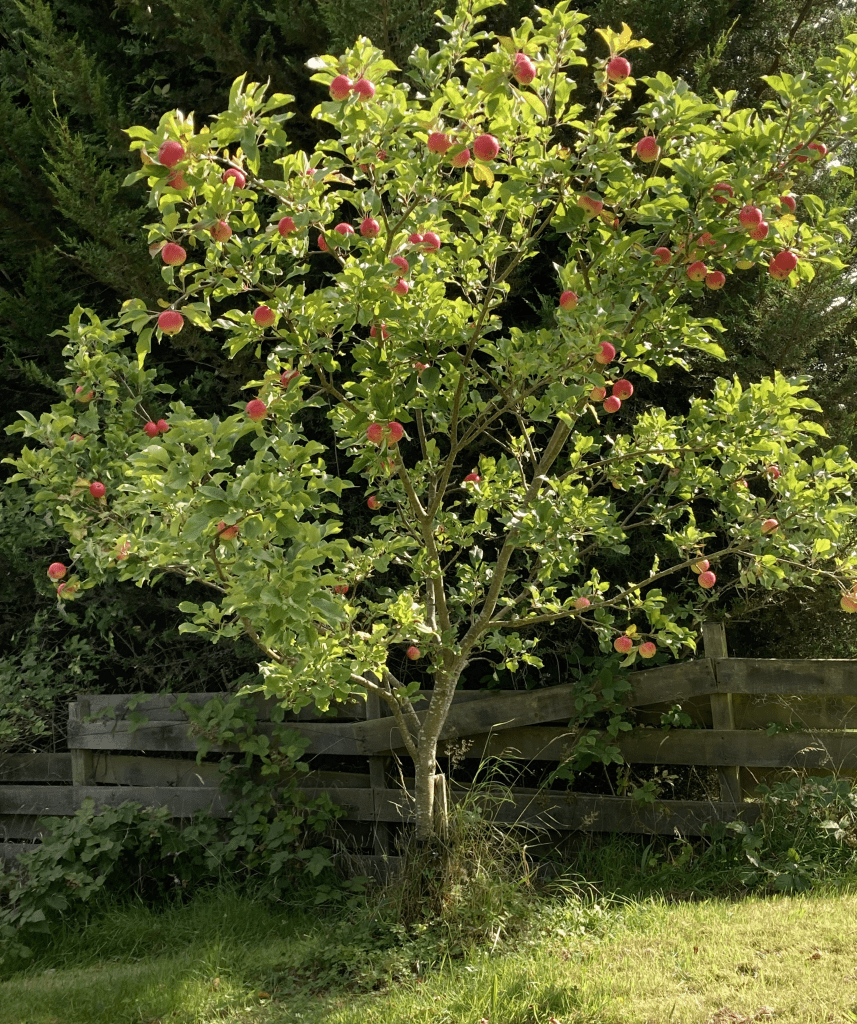
How much fruit will my tree produce?
The amount of fruit produced can vary from year to year and may depend on weather conditions and pollination rates. Some trees will tend to produce a bigger harvest every second year.
According to the Orchard Project, “apple yields vary from year to year and in a good year a smallish bush tree may bear 50kg and a large standard tree, the sort of tree you can walk under, can bear more than 250kg”.
A plum tree on a more vigorous rootstock will produce 18-27kg of fruit a year.
What about pollination?
Pollination, the transfer of pollen from a male flower to a female flower, is key to fruit production. Poor pollination is often the reason for a poor crop. Pollination is dependent on insect pollinators such as honey bees, bumblebees, hoverflies, butterflies and moths. Pollination is also affected by the weather.
Warm, calm weather means pollinators will fly further (up to two miles). Colder weather means insects will fly shorter distances. Planting in cold sites will lead to poor pollination. Temperatures of -2°C will destroy most fruit blossoms. Pollination requirements are complex and compatibility between trees is needed. Most trees that flower at the same time can act as pollinators for each other. Some varieties need two pollination partners.
- Apples – most require a second apple tree for good pollination (some need two other partners). Planting a crab apple tree is a good way to provide a pollination partner as they are universal pollinators for most apples.
- Pears – most require a second pear tree for good pollination (some need two other partners).
- Plums – nearly all self-fertile and don’t require a pollination partner.
- Cherries – many self-fertile.
If your garden already has fruit trees to act as pollination partners or there are trees in neighbouring gardens any new trees are likely to be pollinated. Don’t worry if you only have space for a small tree in a pot as it is likely that other trees will be close by. If your garden is very isolated in a rural area, consider growing two or more compatible trees or select a self-fertile variety.
Can I grow a fruit bush as part of the campaign?
Yes! If you don’t have much space, growing a fruit bush will still provide a good crop of berries. Two or three bushes are usually enough for a family. Fruit bushes grow very well in Fife and are easy to plant and look after. Many popular varieties of bush fruits were developed in central Scotland. Gooseberry and currant bushes can be productive for up to 20 years.
Bush fruits that grow well in Fife include:
- Blackcurrants
- Redcurrants and whitecurrants
- Gooseberries
Other options needing more care include blueberry (prefers acid soils) and cranberry (prefers wet, acid soils).
Do I need to protect my trees and fruit bushes?
In urban gardens most trees will be safe from rabbits and deer. In rural areas protect your young trees with tree guards.
Birds will enjoy eating your fruit, particularly plums and cherries. Put a net over tree fruit when it is starting to ripen. Birds will also eat bush and soft fruit so keep them covered with netting if you want to harvest as much as possible. Or enjoy sharing your produce with the wildlife in your garden!
Will planting a fruit tree affect the value of my property?
Most people love fruit trees and are happy to have them in their gardens. Research suggests a fruit tree in your garden is a positive factor when selling a home.
“A beautiful, mature tree is not just one of the best ways to add value to your home – trees add aesthetic value to any back or front yard. A tree increases privacy and shade and generally improves a home’s curb appeal. Fruit trees are highly valuable, and if cherry, plum, or apple trees thrive where you live, you can’t go wrong with a mini orchard (or even just one tree). Homes and Gardens, March 2021.
“Homes with trees are generally preferred to comparable homes without trees, with the trend across studies being a price increase of about 7%.” Arborist News, August 2007.
What are the rules and regulations for planting in gardens linked to social housing?
Fife Council is keen to help social housing tenants to plant fruit trees in their garden as part of Climate Action Fife. Get in touch with your local Tenants Federation to ask for advice:
- Fife Federation of Tenants & Residents Associations (FFOTRA)
9A Hunter Street, Kirkcaldy, KY1 1ED Tel 01592 641968 Email: enquiries@ffotra.co.uk - North East Fife Tenants & Residents Federation (NEFTRF)
Community Voice, 19 Crossgate, Cupar KY15 5HA Tel 01334 570040 Email: info@neftrf.org.uk - Glenrothes Area Residents Federation (GARF)
4 Marchmont Gate, Glenrothes KY7 5NB Tel. 07849482187 Email: info@garfed.co.uk
Do fruit trees create mess and attract wasps?
Although fallen fruit which rots on the ground can look unsightly it provides vital food for a wide range of garden wildlife.
If you don’t want this to happen in your garden, pick the fallen fruit up and use it in cooking or juicing. As a last resort put on the compost heap. If fruit from your tree falls on pavements sweep it up and add it to your compost bin or your brown bin.
Wasps along with mammals, birds and other insects such as butterflies and moths can be attracted to ripe or rotting fruit. They use the fruit as a food source at a time of year when other food sources are dwindling. Growing fruit is an excellent way to boost biodiversity in your garden and attract wildlife.
Many people are afraid of wasps but they play an important part in a healthy garden as predators. They help reduce aphid and caterpillar numbers. Wasps are also pollinators and are therefore a vital part of your garden’s wildlife.
How can I store excess fruit?
Apples can be stored in cool, dry, dark places over the winter. Store in wooden boxes and keep apples from touching each other. Some varieties store for longer than others so check before you buy if you want to store rather than eat off the tree.
Apples, pears, plums and cherries can all be frozen. Bush fruits also freeze very well. Some community fridges will have freezer storage available for excess fruit.
Apples and pears can also be used to make juice, cider or perry. Dehydration can also be used to store some fruits, for example as dried apple slices. Fruit and berries can all be used to make jams, pickles, chutneys and sauces that can be stored in jars or bottles.
How can I use my fruit?
There are many ways you can use your fruit in cooking, for example in pies, crumbles and as stewed fruit. There are lots of recipes available online to help you find ways to use your fruit.
Here are two recipes you might like to try:
Overnight Oats
Stage 1
- Core but don’t skin your apples (a lot of the goodness is just under the skin)
- Chop small and stew them briefly in a small amount of water (no sugar)
- Cool and store in the fridge (or freeze for later)
Stage 2
- Combine a cup of stewed apples with the same quantity of porridge oats
- Add enough milk (or vegan equivalent) to slacken and leave in the fridge overnight
Stage 3
- Spoon some of the apple/oats mix into a bowl
- Top with plain yoghurt or sprinkle with nuts
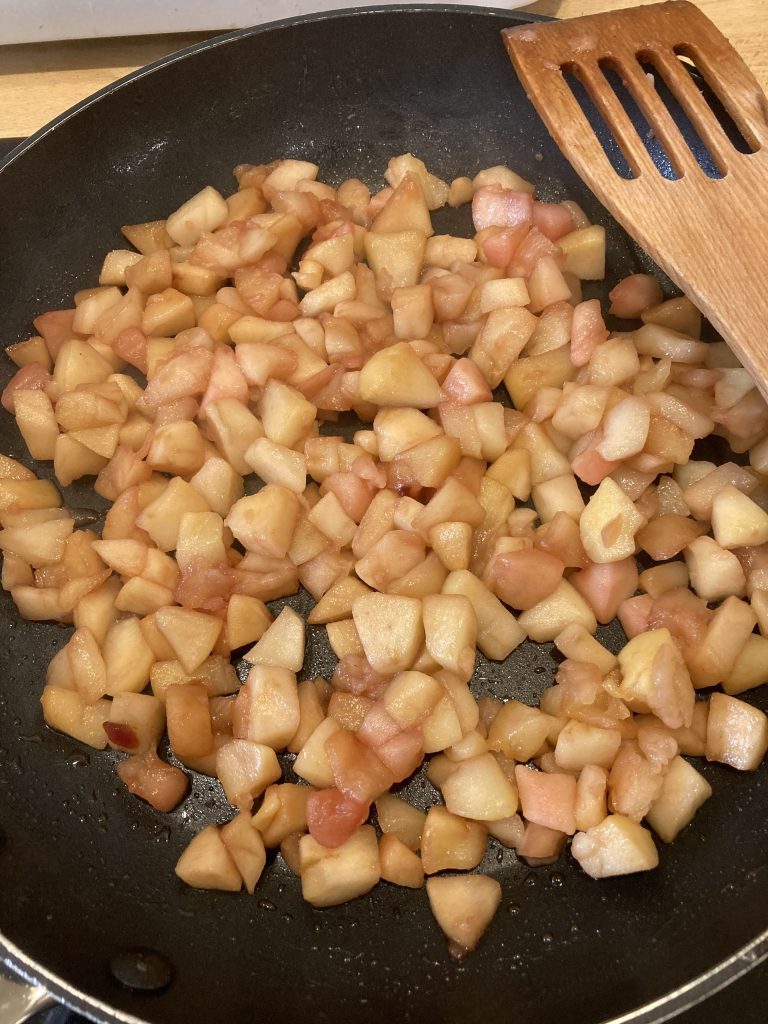
Pink apples
Peel three or four eating apples and dice into 1cm cubes. Melt 50g butter in a pan and fry the apple cubes until turning soft and golden. Add two tablespoons of redcurrant jelly and stir until melted. Cook until the apples are soft but holding their shape. Serve with ice cream or yoghurt or on porridge.
How can I join in if I don’t have a garden?
There will be opportunities to join planting days at community gardens and orchards. You could also volunteer at a local orchard or community garden. You can become a Fife Tree Warden to help look after trees and woodlands across Fife.
If you have a small garden, patio or balcony, fruit trees can be grown in 25 litre pots. Trees grown in pots will have a shorter life but they will produce fruit sooner and may live for 10 years. Growing in a pot may be a good option if you are renting or plan to move within a few years.
You could also help by mapping fruit trees across Fife on our Green Map.
Where can I find help?
Many local and national organisations are happy to offer help with gardening and growing. We have created a list of groups as part of this campaign.
We have lots of community gardens and orchards across Fife where you can find support and knowledgeable people. You may also be able to borrow tools from a local tool library.
There is also plenty of excellent information available online from national organisations, such as the Royal Horticultural Society and The Orchard Project. We have included several national organisations on our list.
Where can I find out more about fruit trees?
Online
You might find the following online resources helpful.
- Royal Horticultural Society: rootstocks
- Royal Horticultural Society: pollination
- Royal Horticultural Society: positioning fruit trees
- Royal Horticultural Society: storing fruit
- Grow Veg: why wasps are good for gardeners
- PLANT: Planning for Fruit Growing workshop
- PLANT: Fruit trees and bushes workshop
- PLANT: Vlog about pruning fruit bushes
- PLANT: Blog about juicing apples
Books about fruit trees
Here is a list of useful books about fruit trees.
- Fruit and Vegetables for Scotland. Kenneth Cox & Caroline Beaton. 2015. Birlinn Limited.
- Fruit and Vegetable Gardening. Michael Pollock. 2002. Royal Horticultural Society. Dorling Kindersley.
- The RHS Encyclopedia of Gardening. Christopher Brickell Ed. 2012. Royal Horticultural Society. Dorling Kindersley.
- The Northern Pomona. Linden Hawthorne et al. 2007. Pomona Publications, York.
- Pruning and Training. Cristopher Brickell and David Joyce. 2017. The Royal Horticultural Society, Dorling and Kindersley
- The Climate Change Garden. Sally Morgan and Kim Stoddart. 2023. Quarto Publishing Group.
Fruit tree height guide
Apple Trees | |||
|---|---|---|---|
| Rootstock | Size | Height | Growing Position |
| MM111 and M25 | Large, very large | Over 6m | Larger gardens and orchards. |
| MM106 | Medium-large | 3-5m | Medium garden. Bigger crops. |
| M26 | Semi-dwarf | 2-3m | Smaller gardens. Needs staking or wall support. |
| M9 | Dwarfing | 2.5m | Smaller gardens. Requires full support. Poor anchorage. |
| M27 | Very dwarfing | Under 2m | Small sheltered garden or pot. Less fruit, weaker tree. |
Pear Trees | |||
|---|---|---|---|
| Rootstock | Size | Height | Growing Position |
| Quince A | Medium | 3-4.5m | Plant 3-5.5m apart. Medium garden. Sunny, sheltered site. |
| Quince C | Semi-dwarfing | 2-3m | Suitable for bush, fans, cordons and espaliers. |
Plum, Damson, and Gage Trees | |||
|---|---|---|---|
| Rootstock | Size | Height | Growing Position |
| St Julien A | Larger | 3-4.5m | Medium gardens |
| Pixy | Semi-dwarfing | 2.5-3m | Needs shelter and good growing conditions |
Cherry Trees | |||
|---|---|---|---|
| Rootstock | Size | Height | Growing Position |
| Colt | Larger | 3-4.5m | Medium gardens. Need rich soil and feeding. Needs protection from birds. |
| Gisela 5 | Smaller | 2-3m | Smaller gardens. Need rich soil and feeding. Needs protection from birds. |
fruit Tree Glossary
Bareroot – a plant sold with its roots bare of soil. Bareroot plants will not be in a pot. They arrive wrapped in straw, hessian or other packaging.
Cordon – a fruit tree trained to have a single vertical trunk. All side shoots will have been cut back hard.
Cultivar – this is an abbreviation of ‘cultivated variety’ and refers to plants bred by gardeners.
Espalier – a fruit tree trained to have a single vertical stem and three or four horizontal branches. Espalier fruit trees are grown against walls or fences.
Fan – a fruit tree trained to grow against a wall or fence with the branches forming a fan shape.
Grafting – this is a way of propagating (growing more) fruit trees by joining the rootstock and scion of two separate trees together. The two parts gradually grow together and form one tree. The join is called the graft union.
Pollination – this is the process by which pollen is transferred from male to female flowers. Pollination is essential for fruit to form at the base of a flower. Pollinating insects are vital to carry the pollen from one flower to another.
Rootstock – in grafting the rootstock is a tree that provides the root system for a new tree.
Scion – this is the bud or shoot from a tree that is grafted to a rootstock to form the top half of a new tree.




